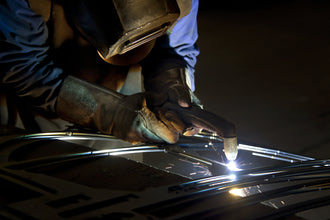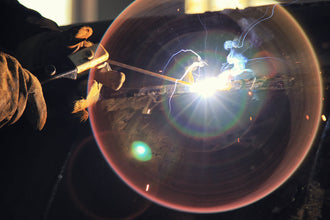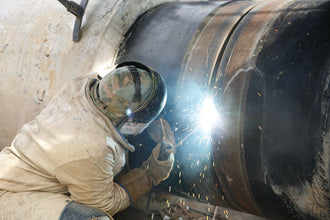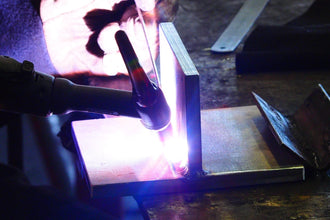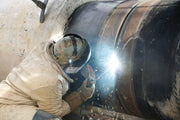
Pipeline welding is a specialized and lucrative career path within the welding industry. With the demand for skilled welders rising in sectors like oil, gas, and infrastructure, learning how to get into pipeline welding can open doors to high-paying opportunities. This guide will walk you through the steps, skills, certifications, and strategies needed to launch a successful career in this field.
Understanding Pipeline Welding
What Is Pipeline Welding?
Pipeline welding involves joining and repairing metal pipes used to transport liquids, gases, and other materials. These pipelines span vast distances, often crossing challenging terrains, and require precision to ensure structural integrity and safety. Pipeline welders work on projects like oil and gas transmission lines, water mains, and industrial piping systems.
Why Choose Pipeline Welding?
- High Earnings: Pipeline welders earn $50,000 to $100,000+ annually, with overtime and hazardous pay boosting income (U.S. Bureau of Labor Statistics, 2023).
- Travel Opportunities: Projects in Alaska, Texas, and international locales offer adventure.
- Job Stability: The American Society of Civil Engineers estimates $2.6 trillion is needed for U.S. infrastructure by 2029, ensuring demand.
Steps to Get into Pipeline Welding
Step 1: Meet Basic Requirements
To get into pipeline welding, you must first meet these prerequisites:
-
Age: Most employers require candidates to be at least 18.
-
Physical Fitness: The job involves lifting heavy equipment and working in extreme conditions.
-
Education: A high school diploma or GED is typically required.
Recommended High School Courses
-
Mathematics (for measurements and calculations).
-
Physics (to understand welding principles).
-
Shop classes (for hands-on experience with tools).
Career Transition Success
Sarah Thompson, a former construction worker, transitioned to welding at 28. She emphasized: *"Physical fitness was key. I trained for months to handle 12-hour shifts in the Texas heat."*
Step 2: Obtain Formal Welding Training
While some learn through apprenticeships, formal training accelerates your path to getting into pipeline welding.
Vocational Schools and Community Colleges
Enroll in programs that offer courses in:
- Shielded Metal Arc Welding (SMAW).
- Gas Tungsten Arc Welding (GTAW).
- Blueprint Reading: Essential for interpreting pipeline schematics.
Apprenticeships
Apprenticeships combine paid work with classroom instruction. Organizations like the American Welding Society (AWS) and unions (e.g., United Association of Plumbers and Pipefitters) offer structured programs.
The United Association of Plumbers and Pipefitters offers 4-year apprenticeships. Apprentice Mark Davis noted: "Earning while learning was a game-changer. I graduated debt-free with a job offer."
Step 3: Earn Welding Certifications
Certifications validate your skills and are critical to get into pipeline welding.
Key Certifications for Pipeline Welders
-
AWS Certified Welder: Focuses on core welding techniques.
-
API 1104 Certification: Specific to pipeline welding standards.
-
OSHA Safety Certifications: Ensures compliance with workplace safety protocols.
Salary Impact of Certifications
Certified welders earn $65,000–$120,000, compared to $45,000 for uncertified peers (Payscale, 2024).
Essential Skills for Pipeline Welders
Technical Skills
-
Welding Techniques: Master SMAW, GTAW, and Flux-Cored Arc Welding (FCAW).
-
Blueprint Interpretation: Understand welding symbols and pipe specifications.
-
Equipment Maintenance: Troubleshoot and repair welding machines.
Soft Skills
-
Attention to Detail: A single flaw can compromise pipeline safety.
-
Physical Stamina: Work long hours in confined spaces or harsh weather.
-
Problem-Solving: Adapt to unexpected challenges on-site.
Gaining Practical Experience
Entry-Level Welding Jobs
Start as a Welder’s Helper ($18–$25/hour) or Maintenance Welder ($20–$30/hour).
-
Welder’s Helper: Assist experienced welders and learn on the job.
-
Maintenance Welder: Work in manufacturing or construction to build foundational skills.
From Helper to Lead Welder
Mike Rodriguez began as a helper in North Dakota. After two years, he earned API 1104 certification and now leads teams, earning $85,000 annually.
Specialized Pipeline Welding Experience
-
Seek out contractors specializing in pipeline projects.
-
Volunteer for fieldwork to gain exposure to outdoor and high-pressure environments.
Navigating the Job Market
Building a Strong Resume
Highlight certifications, apprenticeships, and hands-on experience. Use keywords like “pipeline welding,” “API 1104,” and “field welding” to pass applicant tracking systems (ATS).
Networking in the Industry
-
Join professional organizations like AWS or the National Center for Construction Education and Research (NCCER).
-
Attend trade shows and welding expos to connect with employers.
-
AWS Events: Annual conferences connect welders with firms like Chevron.
-
LinkedIn Groups: "Pipeline Welders United" has 10,000+ members.
Applying for Pipeline Welding Jobs
-
Search for openings on platforms like Indeed, Rigzone, and Union job boards. Indeed, Rigzone, and Union boards list 1,000+ U.S. openings monthly.
-
Emphasize flexibility to travel or relocate in your applications.
-
Relocation: Willingness to travel can secure higher-paying roles.
Career Advancement in Pipeline Welding
Pursuing Advanced Certifications
-
Certified Welding Inspector (CWI): Transition into quality control roles.
-
API 570 Certification: For those focusing on pipeline inspection.
Specializing in High-Demand Areas
-
Underwater Welding: Combines diving and welding skills (requires additional training).
-
Automated Welding: Learn robotic welding systems for industrial projects.
Leadership Roles
-
Welding Supervisor: Manage teams and oversee project execution, average salary $75,000–$110,000.
-
Welding Instructor: Teach the next generation of welders, $60,000–$80,000 annually.
Challenges and How to Overcome Them
Physical and Environmental Demands
-
Solution: Invest in high-quality protective gear and maintain a fitness routine.
Irregular Work Schedules
-
Solution: Build financial stability during peak seasons to offset slower periods.
Keeping Skills Updated
-
Solution: Attend annual workshops and stay informed about new welding technologies.

Future of Pipeline Welding
Industry Trends
-
Automation: Robotic welding is rising, but skilled human welders remain essential for complex tasks.
-
Green Energy: Hydrogen pipelines require new techniques; DOE projects $10B in investments by 2030.
Long-Term Career Outlook
The U.S. Bureau of Labor Statistics projects a 3% growth in welding jobs by 2031, with pipeline welders in high demand due to infrastructure renewal projects.
Conclusion
Learning how to get into pipeline welding requires dedication, training, and a willingness to adapt. By earning certifications, gaining hands-on experience, and networking strategically, you can build a rewarding career in this vital industry. Stay proactive about skill development, and you’ll position yourself for success in the evolving world of pipeline welding.
No matter what kind of welding machine you need, Doughty Welder can provide for your needs. Contact our sales team if you need advice beyond what this article provides. Our team of experts can help you make the right choice.
🧐🧐🧐You might like the following:
1.Select laser welding machine, product introduction: All You Need to Know
2. The Ultimate Battle: Arc Welding vs. Laser Welding
3.Based on 4000+ customer reviews, this plate gold welding artifact stan







